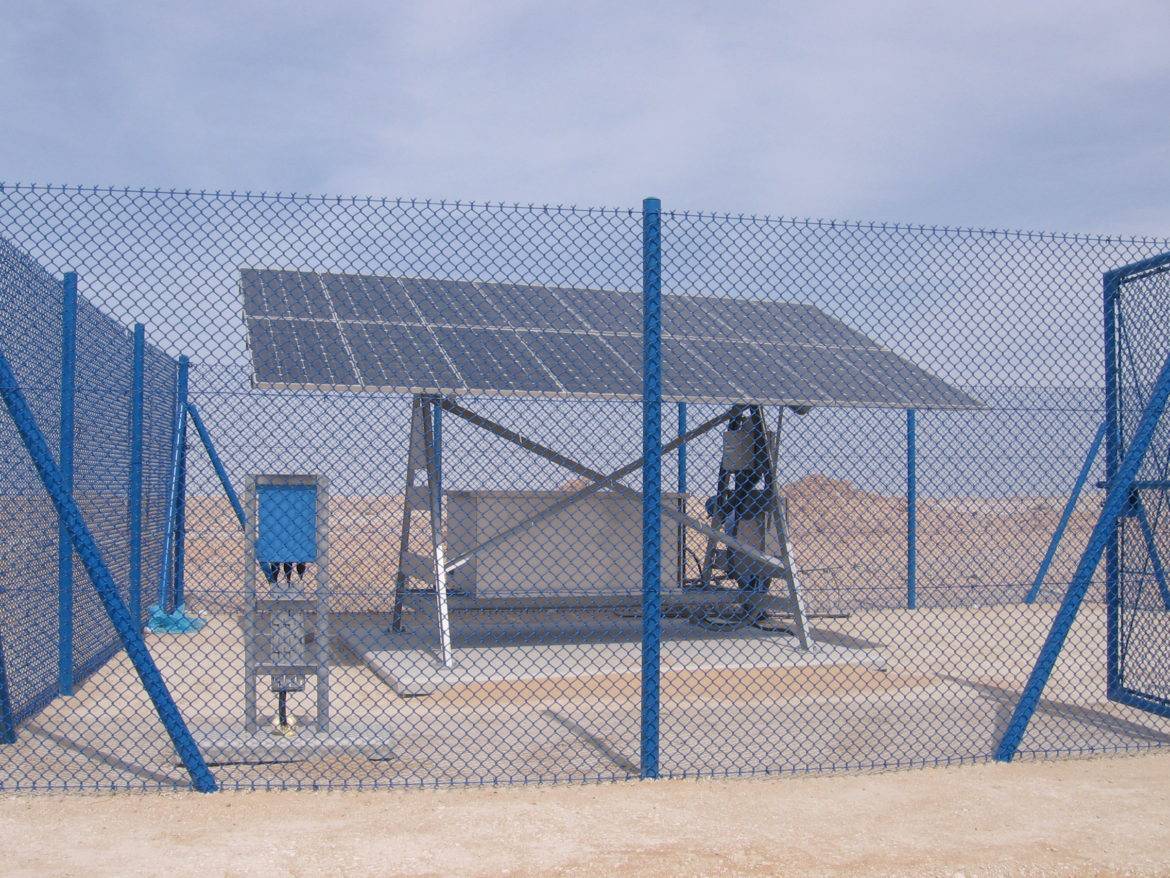Cathodic Protection Systems
Cathodic protection (CP) controls the corrosion of a metal surface and is used extensively in the oil and gas industry. Cathodic protection systems are most commonly used to protect steel, water, and fuel pipelines, wellhead casings and tanks, steel pier piles, and offshore oil platforms. Buried metal structures will experience a galvanic reaction with the ground due to the difference in the electrical potential of the structure and the ground. This reaction results in the loss of surface material from the structure to the ground and turns the structure into an anode and the ground a cathode (current always flows from an anode to a cathode). The loss of material (ions) eventually leads to corrosion of the metal structure, which can lead to a mechanical failure and can be extremely costly.


An effective way to provide protection is through a CP system using impressed current. In such a system, a “sacrificial anode” is placed in the ground close to the structure being protected. Current is then impressed into the anode, releasing surface ions into the ground. Those ions flow into the nearby structure, reversing the electrical reaction for that structure. This turns the structure from an anode to a cathode. The anode is now the sacrificial piece of metal while the structure, acting as a cathode, is protected.
Off-Grid Solar Powered Cathodic Protection Systems
As an example we will discuss a large scale CP systems for wellhead protection using SunWize® Power Stations which were designed for a desert environment and for easy installation. SunWize Power Stations are built with heavy-duty, galvanized steel structures and support bases. The entire system, including the solar array, battery bank and controls, are integrated onto the structure, so the only required site preparation was pouring a concrete pad. The structure, with a fully deployed solar array at a 35° tilt angle, can withstand continuous 90 mph winds according to standard yield analysis as dictated by the American National Standards Institute and ASTM (American Society for Testing and Materials) International. The batteries, proven to withstand desert temperatures, are housed in stainless steel enclosures broken down into flat panels for ease of shipping and installation.
The microprocessor-based CP controller is a sophisticated power supply that integrates cathodic protection controls into a single unit. The CP controller has the following features:
- 3 operating modes: constant voltage, constant current, and ½ cell reference electrode
- User adjustable settings
- Optional meter
- Typical voltage output up to 24V (system voltage)
- Current outputs up to 20A or 40A
- Remote on/off
The solar controller operates in three modes:
- bulk mode with full available solar current charging the batteries,
- absorption mode with the batteries regulated at an elevated voltage to equalize the cells and
- float mode providing standby power and preventing self-discharge of the cells.



Ready to Get Started?
Ready to get started with a solar powered system quote for Cathodic Protection applications? Click here to submit your loads to our system specifier worksheet and we'll respond with a quote!
Still haven't found what you need? Contact Us!


